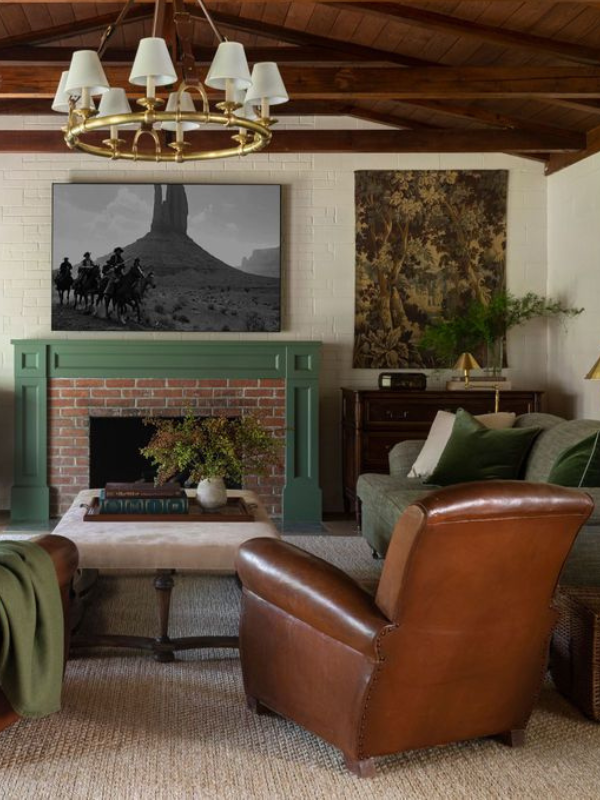Leather sofas, suede chairs, and ottomans upholstered in hide are everyday choices in high-end interior design. As shown at this April’s High Point Market, they’re both on-trend and timeless. Leather furniture is practical, comfortable, and versatile, but it also needs care. Too much sun will dry them out. Heat cracks them. Spills stain quickly if they aren’t addressed. But taking the right steps (i.e., conditioning leather, brushing suede, keeping both clear of vents and direct light) will protect them for years. If cared for properly, their aged patina might can be even more attractive and their worn-in upholstery can be even more comfortable as time passes! Read on for our do’s and don’t’s.
The Do’s and Don’t’s of Caring for Leather Furniture
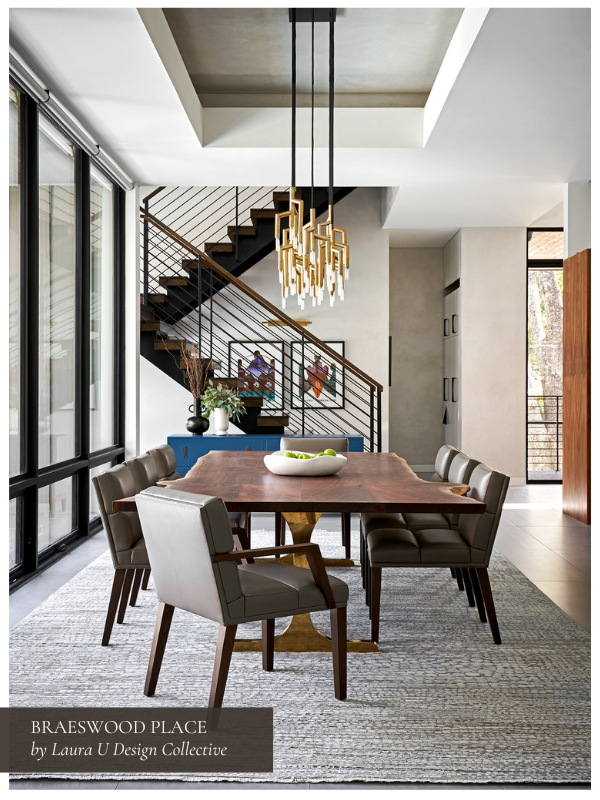
Leather and suede can last for decades, but only if they’re cared for properly. Sunlight, heat, and spills are their biggest enemies, while gentle cleaning and conditioning are what keep them supple and beautiful. The good news is that upkeep doesn’t have to be complicated or even time-consuming.
With a few consistent habits (like brushing suede, wiping leather with a soft cloth, conditioning once or twice a year, and being mindful of placement), your furniture will develop the rich character and patina that make these materials so desirable.
Do: Protect from Sunlight and Heat
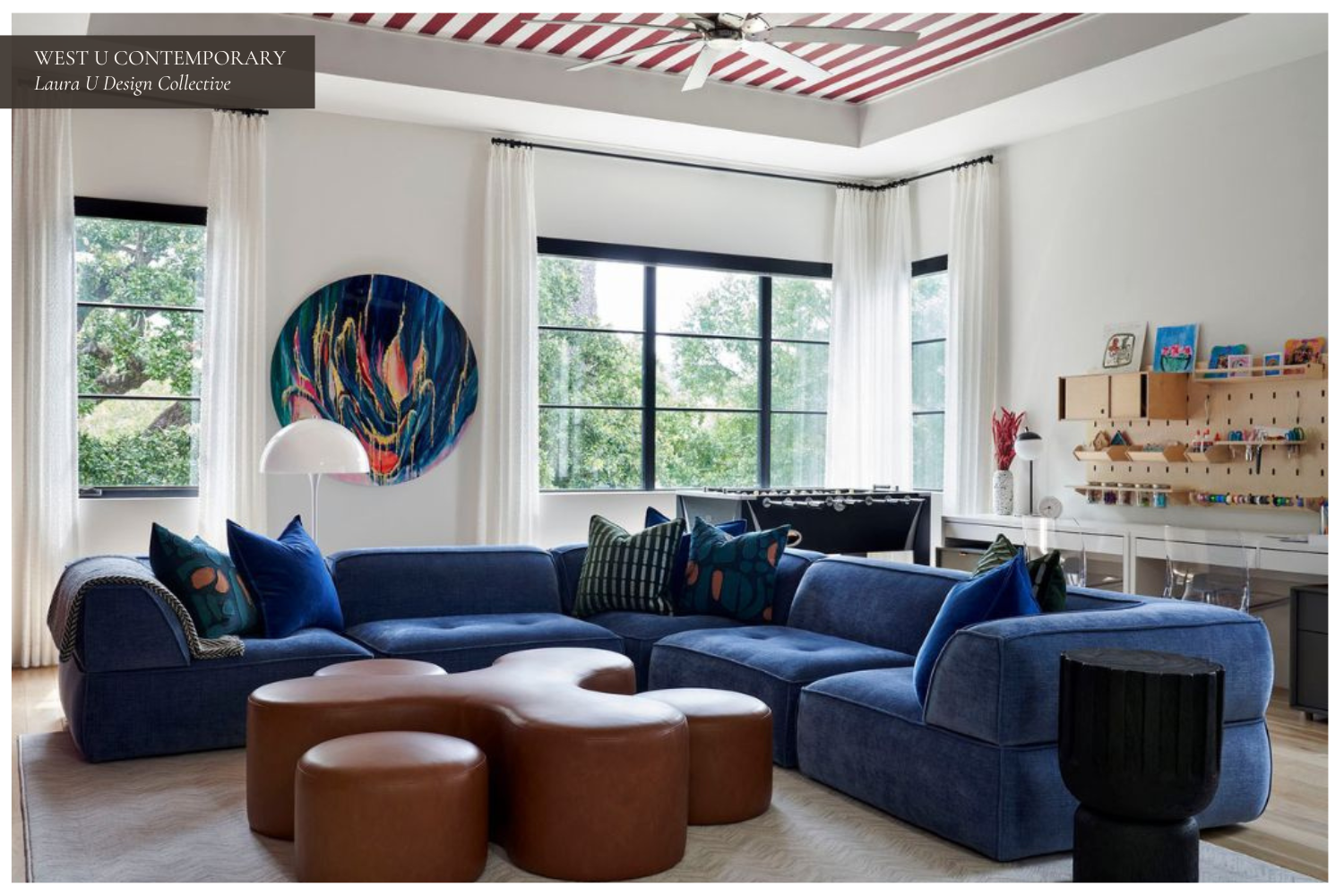
We selected this leather ottoman for the game room in our West U Contemporary project because it resembles a fidget spinner; our client’s child is a big gamer!
Place a grain leather sofa under a skylight and you’ll notice fading within a year. Set a suede chair too close to a vent and the nap will dry unevenly. Leather upholstery is organic, after all; it reacts to the environment. Direct sunlight leeches color, stiffens soft leather, and makes suede patchy. Heat from fireplaces or radiators accelerates cracking and shortens the life of cushions and armrests.
Thankfully, preventing this degradation is neither complicated nor difficult, but it does require foresight. When we design a room, we’ll often angle a leather couch so it avoids hours of strongest sunlight exposure.
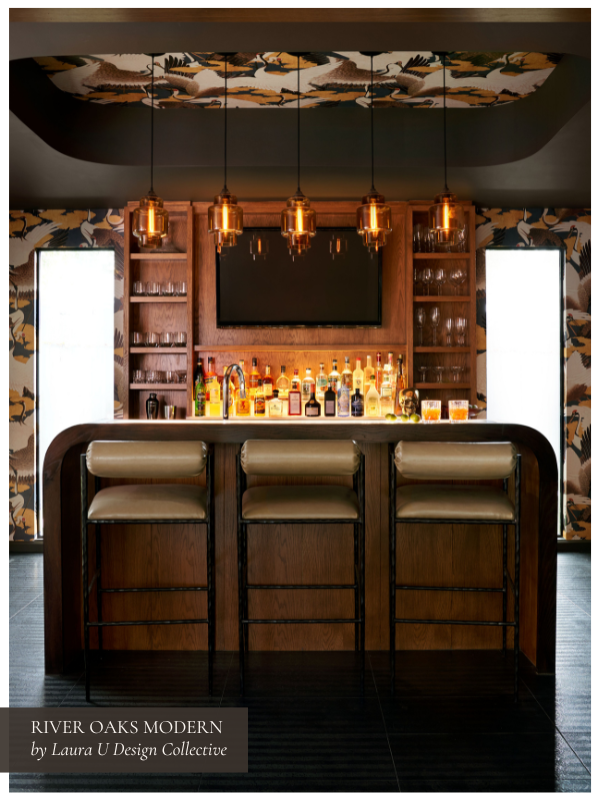
If shifting furniture isn’t possible or preferable, leather care products (leather cleaner and leather conditioner) can help protect your pieces. As Leather Honey’s resource notes: “you can protect leather from sun damage by cleaning it and conditioning it.” Just be sure to test in an inconspicuous area first, and never rely on product alone where placement could solve the issue.
Leather and suede will always wear, but protecting them from direct sunlight and heat means they’ll wear well.
Don’t: Use Harsh Cleaners
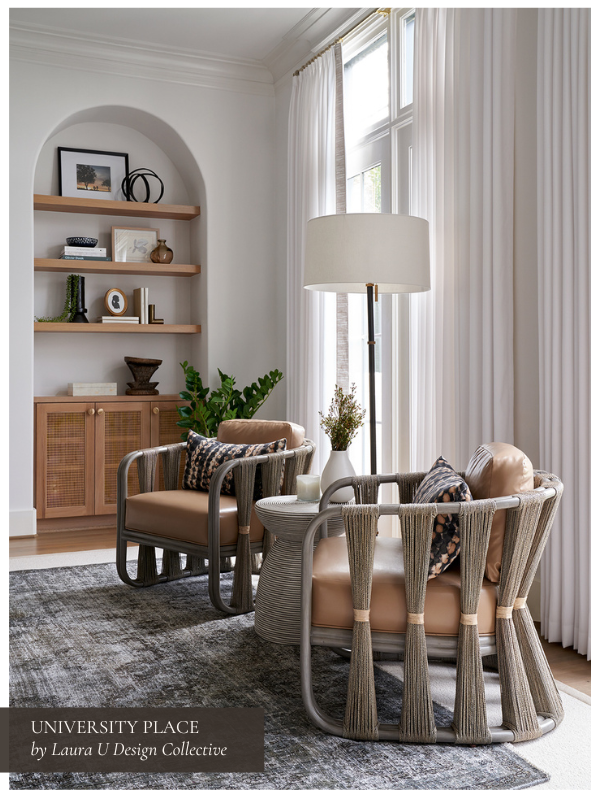
Spray a genuine leather couch (not faux leather) with an all-purpose cleaner and you’ll see the damage right away. The finish dulls, the surface stiffens, and in some cases the color bleeds. On suede, the effect is even harsher: fibers mat down, and what was once soft nap feels rough to the touch. Remember, leather furniture is hide not fabric. It holds natural oils that keep it supple but harsh chemicals strip those away.
If something happens, you need to act quickly, but gentle is still best. As Madeline Buiano and Lauren Wellbank write in this article for Martha Stewart, “Address spills and stains as soon as possible so they can’t cause any lasting damage.”
To clean leather furniture, start with a soft cloth or gentle brush to wipe away loose dirt and dust. Start with the dirtiest parts first and remove any accretions before adding any type of cleaner. If more is needed, use a leather cleaner or leather care products specifically designed for upholstery; never household sprays or solutions that leave soap residue. Avoid excessive water exposure when cleaning up spills. With suede, a dry sponge or suede brush often does the job.
If you’re unsure, test any leather cleaning solution in an inconspicuous area first. That step may feel tedious, but it prevents permanent damage. And in most cases, regular maintenance (you gently wipe, softly brush, and condition every so often) is enough to keep leather supple and suede fresh without reaching for stronger solutions.

What You’ll Need
- A clean cloth
- Products designed specifically for leather goods
- A gentle brush
- Distilled water or vinegar (in some cases)
Do: Embrace Patina
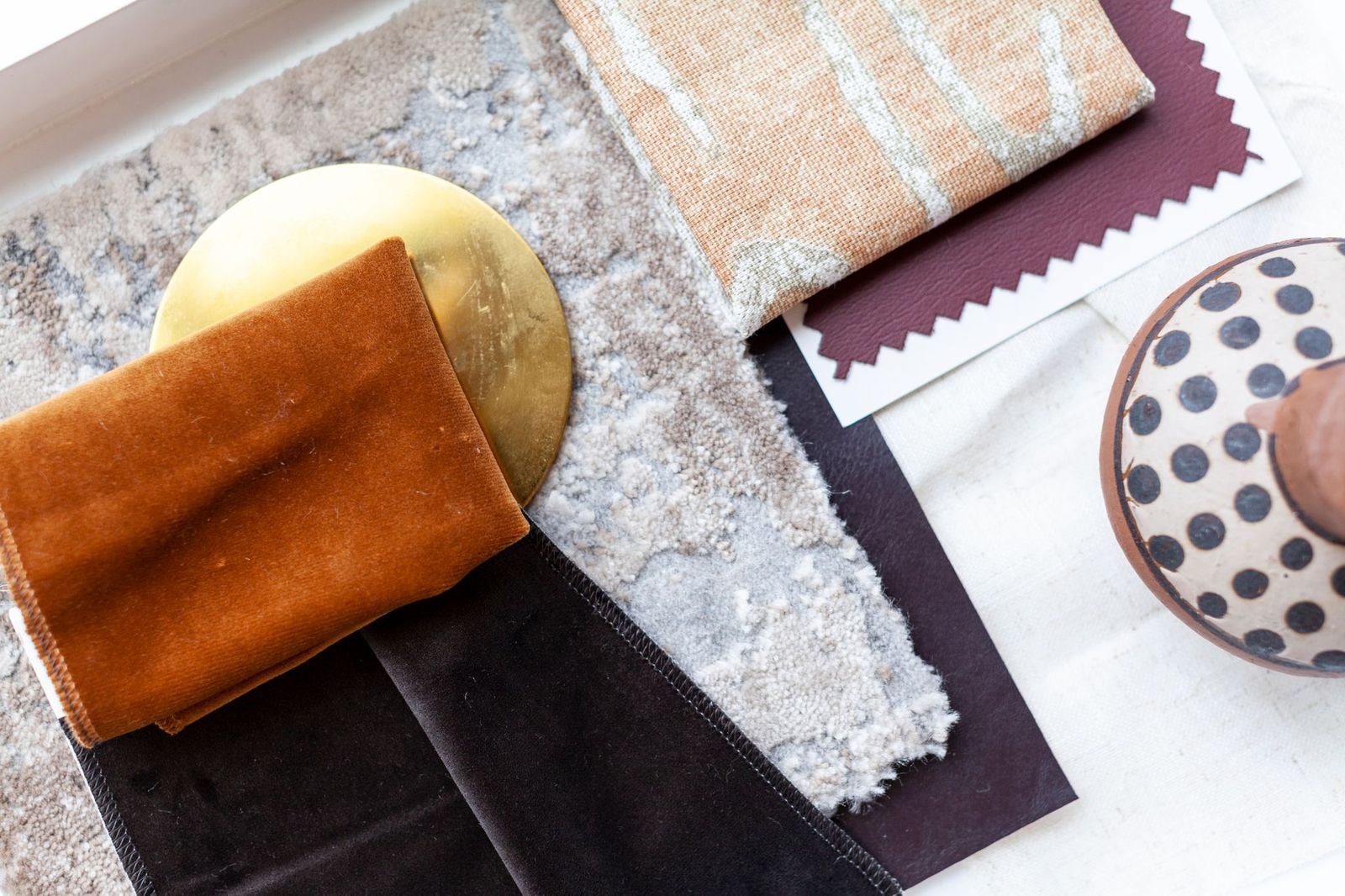
A grain leather sofa will never look the same in year five as it did on day one. Cushions soften and sag. Seams relax a bit. Color shifts slightly in the spots that experience the most use. Suede chairs do the same thing: the nap flattens where people sit and light touch leaves a beautiful variation across the surface.
This is patina. It’s the natural aging of leather and suede, and it’s part of why these materials are specified in high-end interiors. Unlike fabric, they don’t fray. They age gorgeously and help the space evolve naturally.
The key here is balance. Protect leather furniture from direct sunlight, address spills quickly, and condition periodically, but don’t expect it to stay pristine. In family rooms, studies, or lounges, a leather couch or chair that has worn in feels more inviting, not less. Regular maintenance keeps pieces “healthy” while letting the material age gracefully.
Don’t: Let Spills Linger
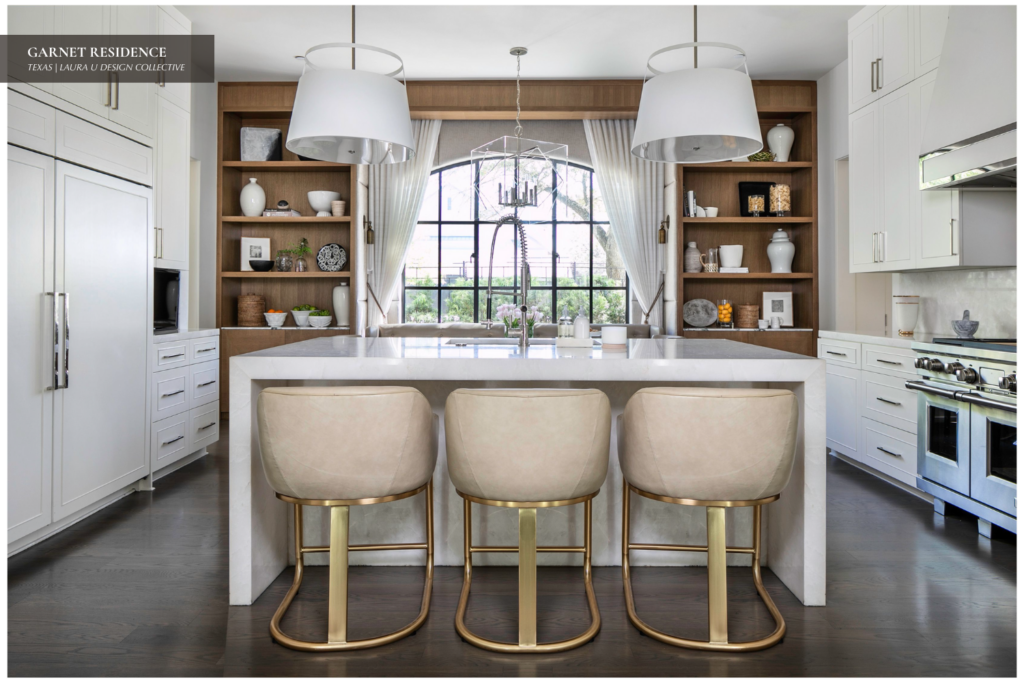
A splash of red wine on a suede ottoman can sink in within seconds. Even water will leave a mark if left to dry on its own. Leather is a little more forgiving, but milk, juice, or oil can stain untreated leather items permanently if not addressed right away.
Again, act quickly. Blot with a clean, dry cloth; never rub, which only spreads the liquid. For suede, resist the urge to scrub. Let it dry naturally, then restore the nap with a suede brush. Leather responds best to gentle blotting and a follow-up with products specifically designed for leather care.
Spills are inevitable, but stains don’t have to be permanent. Quick, careful action preserves both beauty and longevity.
Do: Condition Leather Periodically
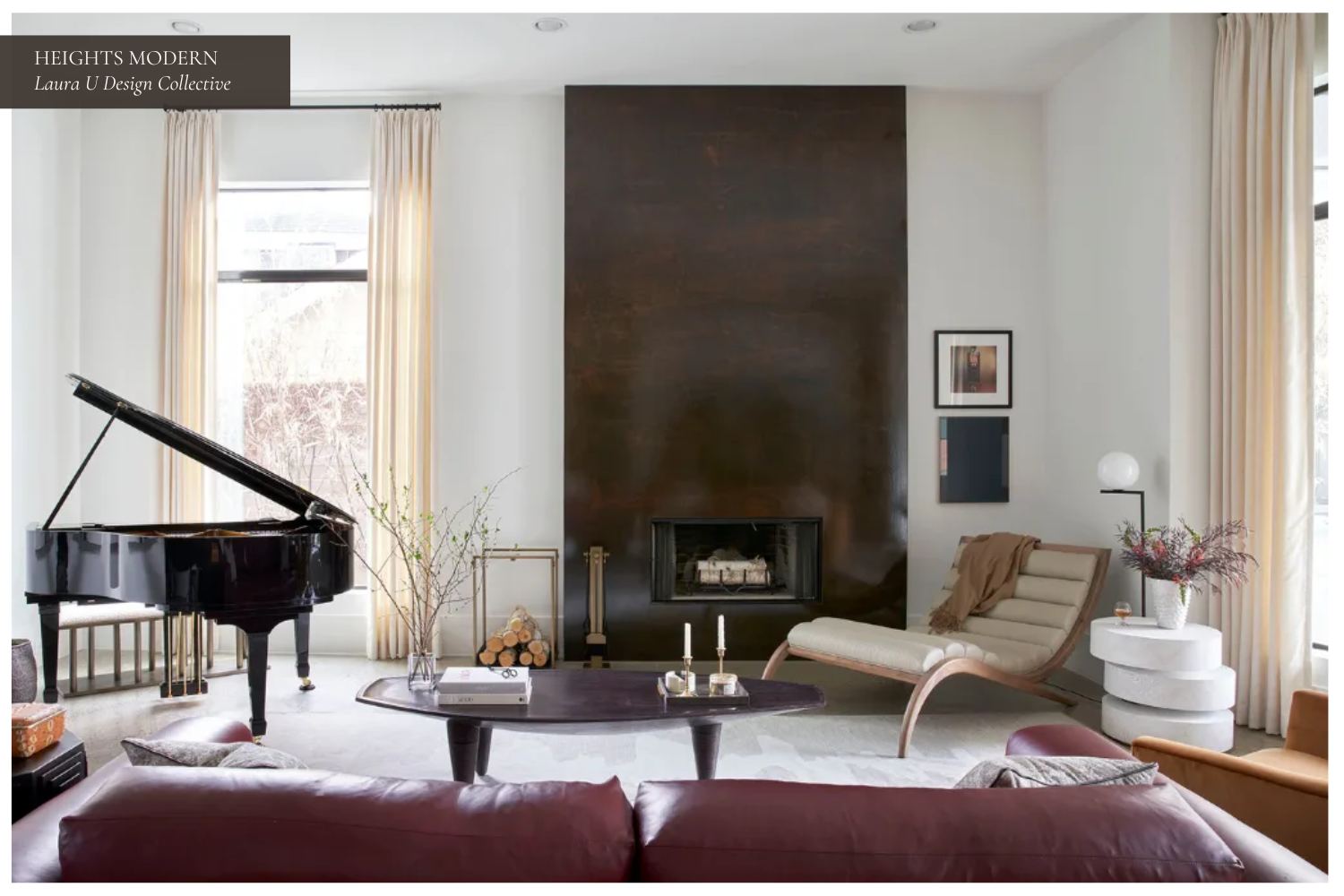
A leather sofa that goes unconditioned will eventually stiffen and cracks will appear along seams, cushions will lose flexibility, and degradation from environmental exposure will accelerate. Leather needs moisture the way wood needs oil or stone needs sealing. Without it, wear shows faster than it should.
Conditioning once or twice a year is usually enough. Use a leather conditioner or leather oil formulated for upholstery, and always test in an inconspicuous area first. Apply with a soft cloth, wipe away excess, and allow it to absorb fully before sitting.
When to Call in the Experts
If your leather sofa, chair, or ottoman is antique or vintage, professional care is usually the safest choice. Older hides may have been tanned with methods no longer used, and they can react unpredictably to modern leather conditioners.
Stitching is usually more fragile, cushions may be uneven, and surface cracks can deepen if the wrong product is applied. In these cases, a leather restoration specialist can clean, rehydrate, and condition the upholstery without risking damage.
Don’t: Ignore Dust and Dirt
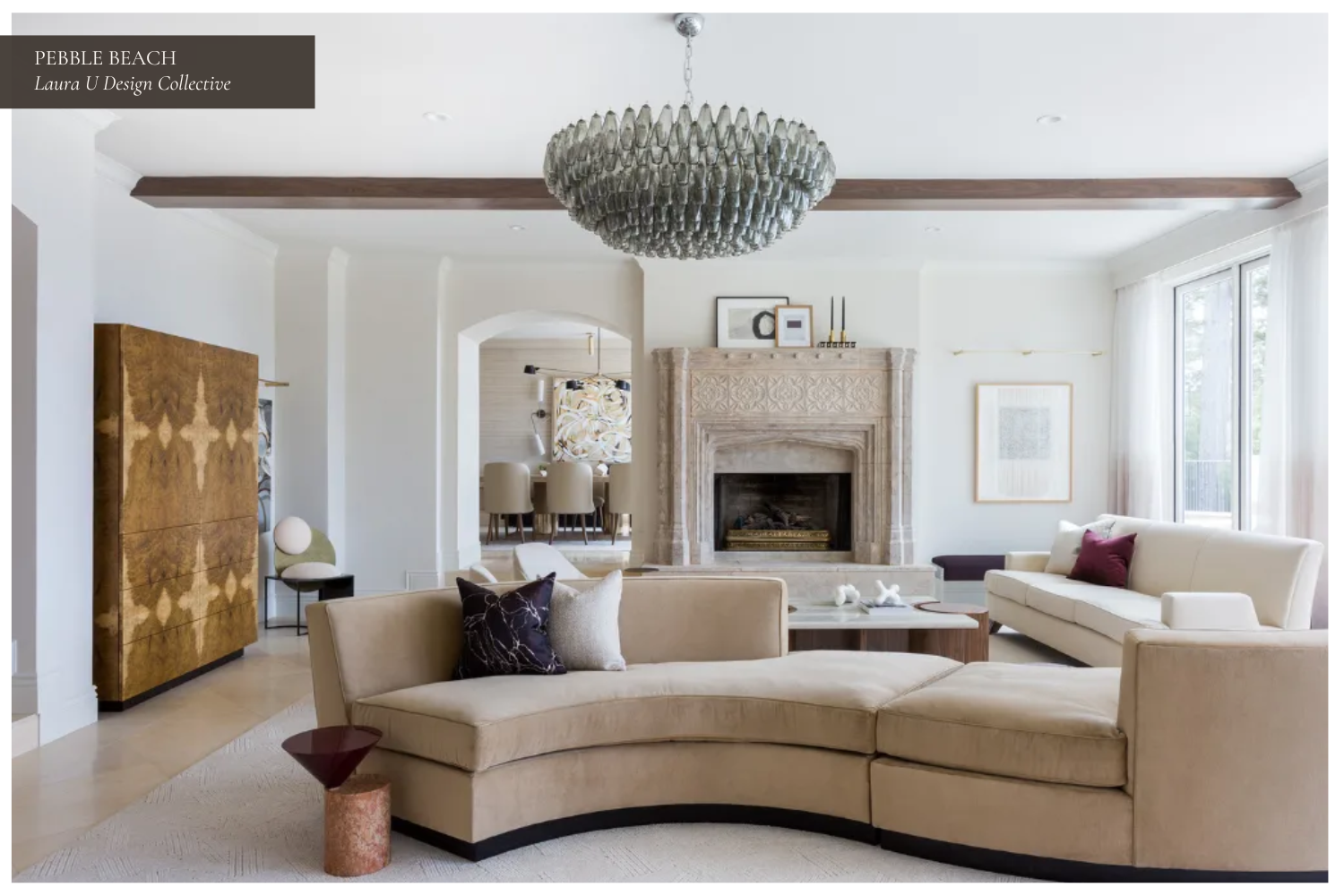
Dust may seem harmless, but over time it dulls suede and clogs the nap. On leather, grit behaves much like sandpaper: it scratches the surface and wears down the finish. The dirtiest parts of a sofa or chair are usually the arms, cushions, and seams; this is exactly where dust and dirt tend to collect.
To clean leather furniture, vacuum suede with a soft brush attachment; you want to remove all loose dirt and dust before applying any moisture. Clean top to bottom. Afterwards, gently wipe leather with a damp cloth. Avoid excessive water and skip soap-based solutions that leave residue. A few minutes of attention each month prevents long-term wear and keeps the upholstery looking its best.
Do: Choose Placement Wisely

University Place’s dining room includes Roberta Schilling Cava chairs that our team had upholstered in a custom blue fabric resembling vinyl or leather.
Even the best care can’t make up for poor placement. A white suede sofa in a playroom is asking for trouble. A leather armchair placed under direct sunlight will fade unevenly. Car interiors illustrate the same principle; you’ve certainly seen it. Heat, light, and daily use take their toll faster in the wrong conditions.
Placement matters. In a darker study or den, a saddle-leather chair feels right at home. In a living room, a grain leather sofa positioned away from vents and windows will stay supple for years. For high-traffic spaces, darker tones or treated leather will hide scratches more easily than pale tones.
At Laura U Design Collective, we guide clients toward upholstery that fits both their lifestyle and their interiors. In these cases, we might recommend you opt for performance fabrics that mimic natural leather.
Creating Spaces That Endure and Evolve with Laura U Design Collective
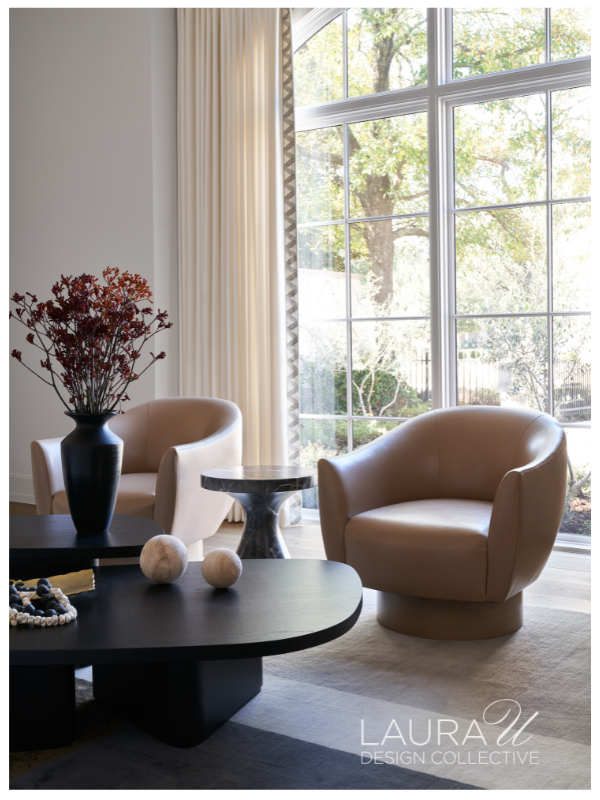
Leather and suede require some maintenance, but that care pays off in spades. A conditioned leather sofa stays supple. A suede ottoman brushed regularly keeps its stunning texture. Placement out of direct sunlight slows fading and cracking. Small, consistent steps keep these investment pieces strong for decades.
The same thinking applies to every finish in a home. Wood floors last longer when they’re sealed. Stone counters resist stains if they’re properly treated. Fabrics chosen with lifestyle in mind (performance textiles in high-traffic rooms, for example) look better, longer.
At Laura U Design Collective, we help clients balance beauty with practicality from the start. That means selecting the right materials, explaining how to care for them, and designing rooms that feel lived in but last.
Ready to invest in furnishings that age gracefully and a home designed to evolve with you? Contact our team to begin.



